1、Spicy Chicken Offal
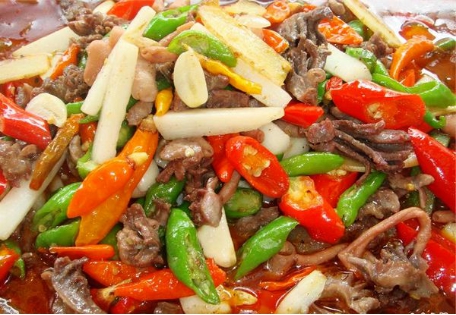
Qianjiang Chicken Offal uses Tujia cooking methods, with chicken intestines, chicken livers, chicken hearts and other chicken offal as raw materials, and the chicken is cut into thin slices, supplemented with potato cubes, pointed pickled peppers, fresh onions, etc. It has a spicy taste, fresh color, delicious taste, and mellow flavor.
After Qianjiang Chicken Offal is cooked, it is cooked over a slow fire while eating. You can add cabbage, bean sprouts, winter melon, green vegetables and other vegetarian dishes to form a unique Tujia dish.
When outsiders come to Qianjiang, the first dish they must try is “Qianjiang Chicken Offal”. “Qianjiang Chicken Offal Shop” and “Qianjiang Ancient Town Chicken Offal Shop” can be seen everywhere in Chongqing’s main city and Chengdu. Qianjiang people have successively opened “Qianjiang Chicken Offal Shop” in Beijing, Shanghai, Lhasa, Guangzhou and other places, and they are very popular.
In Qianjiang, chicken offal, a long-standing and unique delicacy, once again fully demonstrates the Chinese people’s dietary wisdom and the extensive use of ingredients. Chicken offal has become a “food business card” for Qianjiang that is well-known in Chongqing and even across the country. It is also one of the few Qianjiang delicacies with a geographical indication.
2、Small Nanhai Tofu Pudding
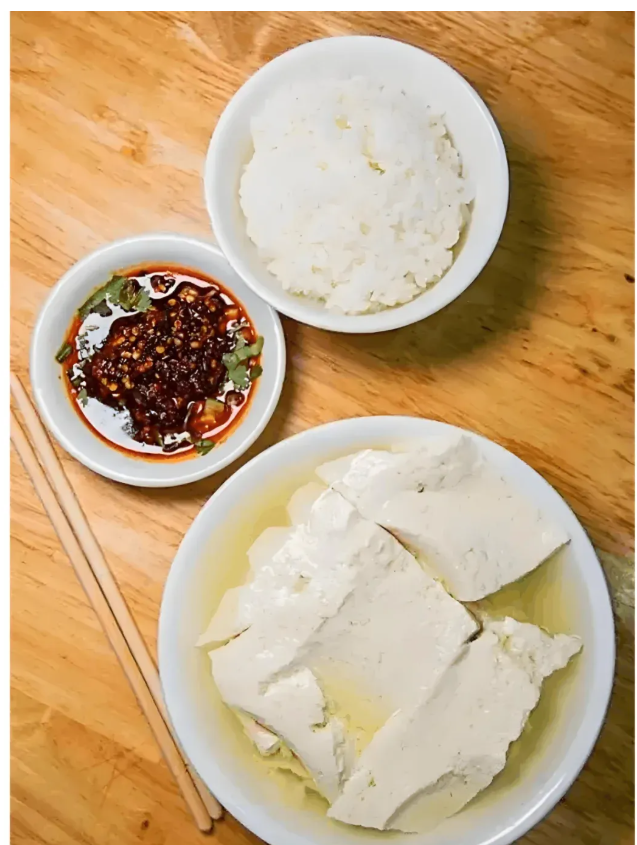
This is definitely a “hidden menu” treasure food! Made with Qianjiang mountain spring water and local soybeans, it has a delicate and tender taste that melts in your mouth. Served with special chili oil, pepper powder and a small amount of chopped green onion and coriander, the salty, fresh and slightly spicy taste has a hint of sweetness, which makes people unable to stop. Every bowl of tofu pudding hides the Qianjiang people’s persistent pursuit of food.
3、Qianjiang Vegetable Beef

In restaurants of all sizes in Qianjiang, beef and green vegetables are mostly cooked in a “simmered pot” style. First, stir-fry the green vegetables until they are 70% to 80% cooked, then pour oil into the pot and slide the beef in to stir-fry until they are 70% cooked, then drain the oil and remove. Add dried chili peppers and other ingredients to the bottom oil to stir-fry until fragrant, and finally pour in the beef and green vegetables, and add various seasonings to stir-fry quickly and evenly. Put it in a small iron or stainless steel pot, continue to heat it after serving, and diners can slowly simmer and eat.
Unlike the heavy oil characteristics of Qianjiang chicken offal, beef and green vegetables are more simple and lighter, and the proportion of green vegetables in a pot is much higher than that of beef. This peculiar combination of meat and vegetables is rare, just like the famous “Geleshan Spicy Chicken” in Chongqing Jianghu cuisine, which has less meat and more spicy. Diners use chopsticks to pick beef shreds among the green vegetables, which actually has a kind of fun in searching. Put the vegetables and beef into your mouth together, and you can experience the wonderful stimulation that the contrast between meat and vegetables brings to your tongue. Especially when you chew them carefully, the slight bitterness hidden behind the fragrance of the vegetables can make you linger on it for a long time and you can’t bear to put down your chopsticks.
4、Apengjiang Tofu Fish
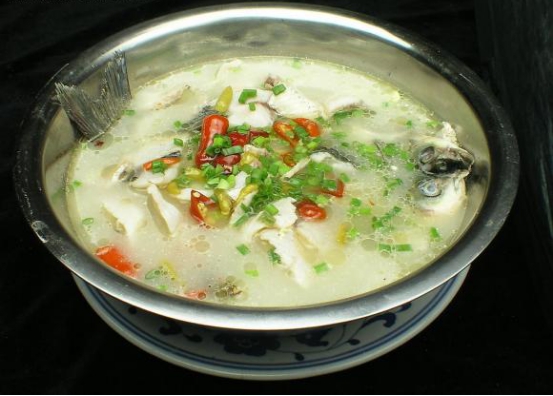
The Apeng River is the largest tributary of the Wujiang River and a reverse-flowing river from east to west. It breaks through the mountains and ridges in Qianjiang, winding and twisting to form the original 100-mile canyon and river scenery of “strange, dangerous, steep and beautiful”. The Apeng River is surrounded by high mountains and deep valleys, with cliffs facing each other. The unique geographical advantages, good ecological environment and high-quality water quality produce a large number of wild fish such as sow shells (book name: mandarin fish) and yellow croaker. The people of Qianjiang cleverly combine the precious wild fish of the Apeng River with the local Tujia tofu, and add the traditional ingredients and secret recipes of the Tujia people to form the unique Apeng River tofu fish. Its taste is mainly clear soup and spicy, with the characteristics of fresh fish meat, refreshing taste and so on.
5、Tujia mung bean powder
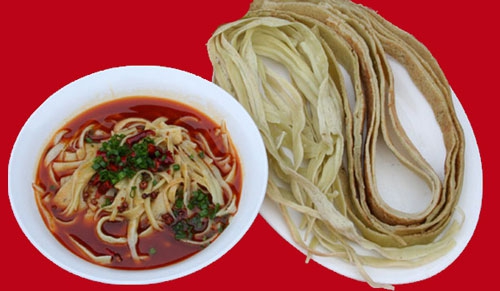
Mung bean powder is a delicacy of the Tujia ethnic minority. It has been called “health food powder” by locals since ancient times. Tujia mung bean powder is mainly made by grinding rice and mung beans into powder with a stone mill or grinder, and then using a funnel to burn it into circles of vermicelli in a pan like mosquito coils. It can be eaten after being cooked.
The most famous mung bean powder in Qianjiang is the Zhuoshui mung bean powder in Zhuoshui Ancient Town, Qianjiang District. Zhuoshui mung bean powder is an intangible cultural heritage protection project in Chongqing. At present, there are more than 20 mung bean powder manufacturers in Zhuoshui Town, and more than 10 mung bean powder restaurants. While visiting Zhuoshui Ancient Town, tourists can enjoy a bowl of unique, traditional handmade mung bean powder, which is a feast for the eyes and the mouth.
6、Shijia Lamb Bowl
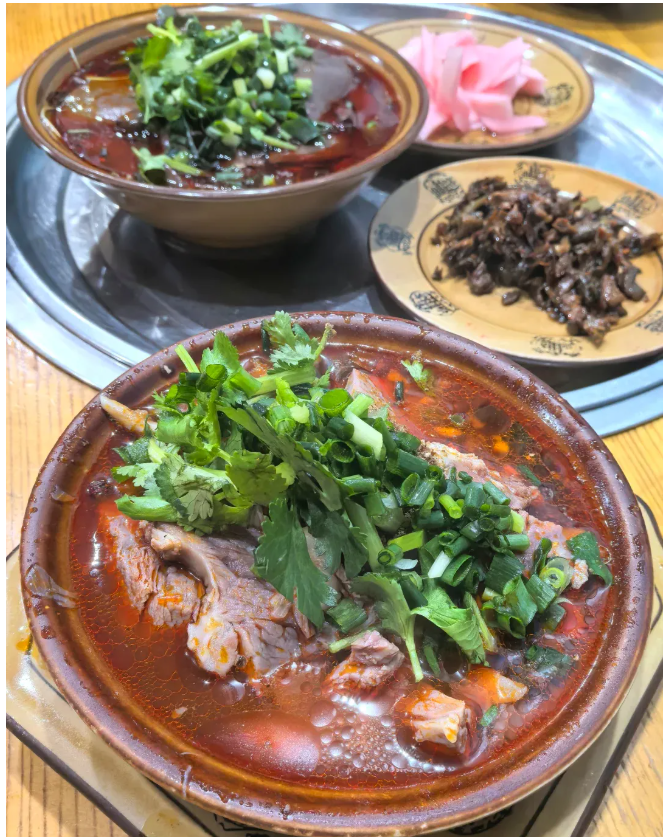
This is the star on Qianjiang’s “must-order list”! Local goat meat is used and simmered over low heat for more than four hours. The soup is milky white and the meat is tender. A bowl of steaming mutton soup, with exclusive spices, will instantly conquer your taste buds with its rich and fresh aroma. Especially in winter, a bowl of this is a “resurrection”-like enjoyment that warms your stomach and heart.
7、Qianjiang Chicken Hotpot
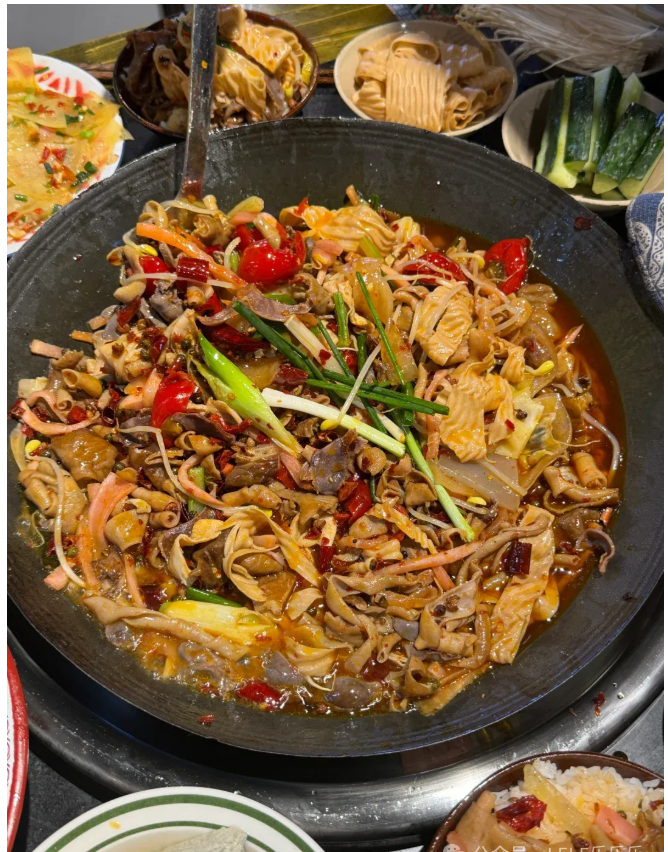
This is the Qianjiang version of “private cooking”! Fresh chicken offal is cooked with a special red soup base, and the aroma is overflowing. The soup base is made from local mountain spring water and dozens of Chinese herbal medicines, which is clear but not bland, fresh but not greasy. The most special thing is the perfect fusion of the aroma of medicine and meat. It tastes both hot and spicy like hot pot and nourishing like a medicinal diet. It is definitely a “surprise” experience.
8、Qianjiang Sour Soup Fish
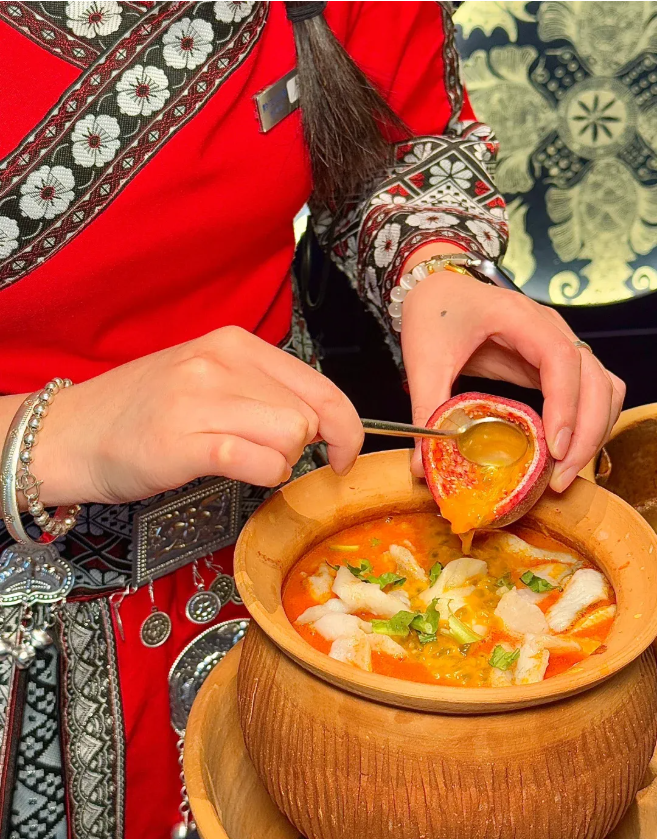
A must-order delicacy at the “Internet celebrity check-in spot”! The local farmers’ homemade sour soup is used as the base, and fresh grass carp is added and cooked slowly. The soup is turbid, the fish is tender, and it tastes sour and refreshing. In particular, the unique sour taste comes from the local unique fermentation process, which is both appetizing and non-irritating. With a little chili and coriander, it enhances the flavor and relieves greasiness. Every time you taste it, you will enjoy the “Michelin level” enjoyment.
9、Diguniu Kimchi/Diliuliu
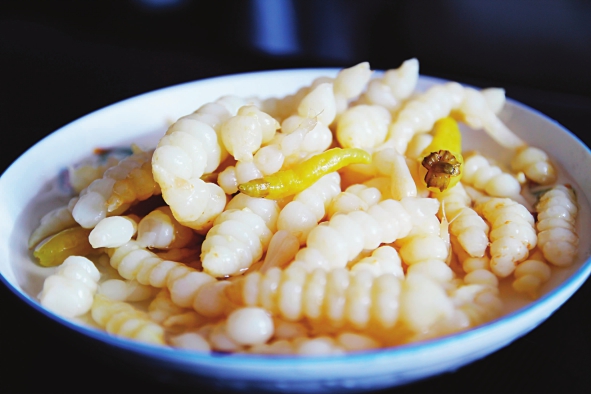
Diguniu, also known as herbivorous silkworm, pagoda vegetable, and divine insect vegetable, is a perennial herb and a unique species in the Wuling Mountain area that is absolutely pollution-free. This dish is made using the method of making pickles. It is crystal clear, crispy and delicious, sour and sweet, and has a unique flavor. It is not only a good food but also has high medicinal value. Eating it after a meal can help digestion, and eating it after drinking can also help sober up.
Diguniu is sporadically planted throughout the country, but due to differences in natural conditions such as climate, soil, and water sources, the quality is not as good as that of Qianjiang. The processed series of products are not as bright, crystal clear, and the taste is not as crisp and tender as that of Qianjiang’s Diguniu. Qianjiang is the main production area of Diguniu in the country, and the quality of Diguniu is also the best.
10、Qianjiang Zhahaijiao
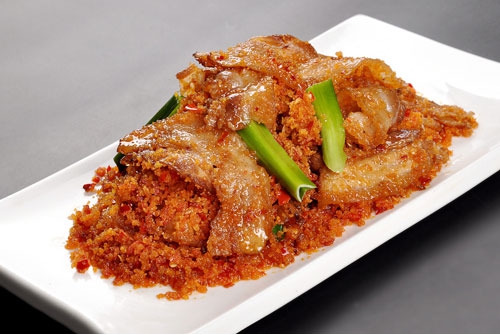
Zha Haijiao is the favorite of Qianjiang people on the table. Whether it is served with wine or rice, Zha Haijiao can be seen everywhere.
In the eyes of Qianjiang people, Zha Haijiao is a family heirloom given by Tujia ancestors, and each production process is a continuation of memory and emotion. When the peppers are ripe in autumn, it is the best time to make Zha Haijiao. Wash the red peppers with clean water and dry them. Chop them with a knife and mix them with salt, ginger, a little garlic and other condiments. Then add corn flour or glutinous rice flour about half the amount of peppers according to your taste. After mixing evenly, immediately put it into a ceramic jar, press it tightly, plug it with clean straw or corn husks, and then wrap the jar mouth with bamboo strips. Invert it in a ceramic basin filled with clean water and let it ferment in a sealed manner. After about a week or two, a jar of slightly sour and fragrant Zha Haijiao is ready.
There are many ways to eat the prepared slag pepper. The best way to eat it is to use it as a companion to cooking, so that its flavor can be brought to its extreme. For example, the dish of slag pepper fried twice-cooked pork, after being fried on a high fire, the gravy that is forced out slowly soaks into the slag pepper, and the taste is very lethal.
